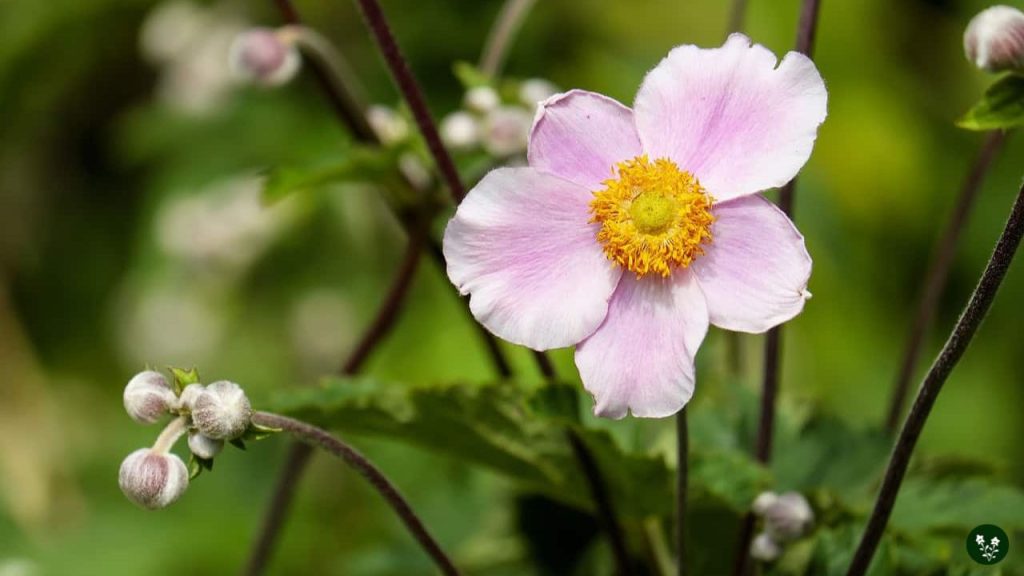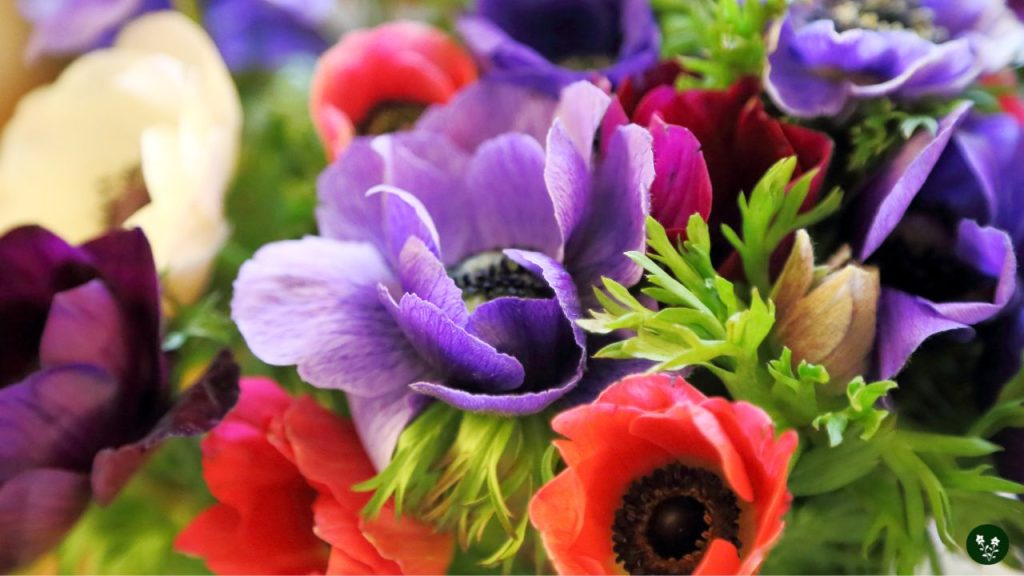
Anemone flowers are known for their diverse and intricate symbolism.
They can represent various meanings, such as protection against ill will, forgotten love, anticipation, and remembrance of a deceased loved one, depending on the context and color of the bloom.
Anemones come in a wide range of colors, each carrying its distinct significance.
For example, blue anemones symbolize mutual trust, intelligence, love, and respect, while red and pink anemones are often associated with a forsaken or dying love.
The meanings of these vibrant flowers have evolved as they have been employed to convey specific messages or emotions in various cultures and historical periods.
In this article, we'll cover
1. Anemone Flower: Background and Symbolism

Historical Significance
The anemone flower has a long history, with its origins tracing back to ancient Greek and Roman times.
In Greek mythology, the anemone flower was believed to have sprung from the tears of Aphrodite as she mourned the death of her lover, Adonis.
Throughout history, various meanings and symbolism have been attributed to the anemone flower. It has been considered a symbol of protection against evil and a representation of forsaken love or death, depending on its color.
In some interpretations, the anemone also represents anticipation, as the flowers close at night and reopen in the morning.
Cultural Importance
Across different cultures, the symbolism of the anemone flower may vary. For instance, in Eastern cultures, white anemones are associated with death and bad luck, as white is the color used at funerals.
In Western cultures, blue anemones represent mutual trust, intelligence, and love or respect.
Apart from their symbolic significance, anemones are highly valued for their visual beauty and are often used in floral arrangements and bouquets.
Their diverse colors and delicate appearance make them attractive for various occasions, from weddings to funerals.
2. Color Meanings of Anemone Flowers

Red Anemones
Red Anemones symbolize powerful emotions such as love, passion, and grief.
However, they may also represent the blood of Christ in Christian communities, as shown in various paintings depicting the crucifixion or the Virgin Mary in mourning.
Purple Anemones
Purple Anemones embody regality and luxury, as well as intrigue and mystery. Rich shades of purple also convey a sense of spiritual growth and transformation.
Blue Anemones
Blue Anemone flowers are associated with trust, intelligence, love, and respect. They can serve as a representation of anticipation and the arrival of late spring and early summer.
Pink Anemones
Pink Anemones often tie in with the theme of forsaken or dying love, reflecting their close relationship with red anemones. They can also signify tenderness, compassion, and gentle nature.
White Anemones
White Anemones usually symbolize purity and innocence; similarly to blue anemones, they can represent anticipation. In Eastern cultures, white anemones can signify death and bad luck, as the color white is commonly used in funerals.
Orange Anemones
Orange Anemones, while less common, convey warmth, energy, enthusiasm, and a sense of adventure. Their vibrant hues can add color and liveliness to any arrangement.
3. Meaning in Different Occasions

Weddings
Anemone flowers can be a beautiful addition to wedding bouquets as they symbolize anticipation and excitement for the future.
Their delicate and elegant appearance enhances the romantic atmosphere of the ceremony. The purple and indigo anemones, in particular, represent the anticipation and joy of happy occasions such as weddings.
Funerals
While some cultures consider anemones a symbol of bad luck, they can also be offered at funerals or memorial services as a symbol of love and protection against evil.
The red anemone, for example, represents forsaken love and may be an appropriate choice for expressing deep emotions at a funeral.
Gifts
When choosing anemones as a gift, it’s important to consider the meaning associated with different colors. White anemones are often seen as a symbol of innocence and purity, making them a lovely choice for a thoughtful gift.
In contrast, brighter colors like red or purple can represent passion and anticipation, making them suitable for romantic gestures or celebrating special moments.
Anemone flowers can make a meaningful gift for various occasions; choose the appropriate color and symbolism based on the specific event and the recipient’s preferences.
Conclusion
Anemone flowers are rich in symbolism and meaning, making them popular for various occasions. The flower primarily symbolizes anticipation, and, in some cases, it represents protection against ill will and evil, as well as forgotten love.
Color plays a crucial role in determining the specific symbolism, with blue anemones denoting mutual trust, affirmation of intelligence, and love or respect.
Anemones come in various colors, including red and pink, strongly associated with a forsaken or dying love.
On the other hand, white anemones signify death and bad luck in some Eastern cultures, where white is commonly used at funerals.
Purple and blue anemones are also common and carry unique connotations.
These beautiful flowers have been a popular choice for gardeners and florists, and those looking to give a thoughtful and symbolic gift.
In summary, whether planted in your yard for early pops of color or given as a stand-alone gift or in a bouquet, anemones carry deep meanings that can be tailored to the occasion and the sentiment you wish to convey.
Discover the hidden meanings behind your favorite blooms:
Leave a Reply